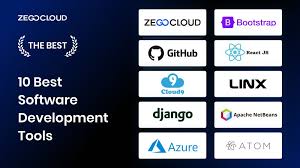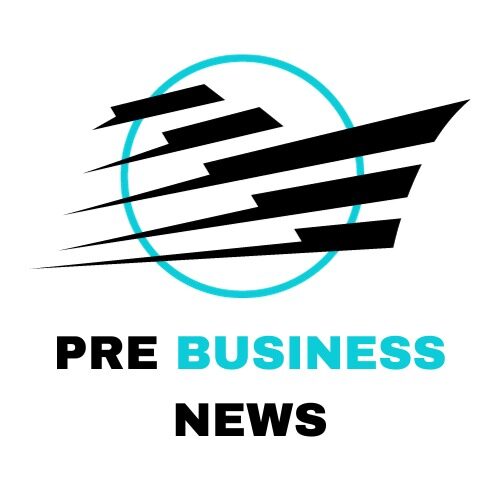In a digital-first world, the right software tools can determine the success or stagnation of any business, team, or entrepreneur. With thousands of options available in every category—from project management to design, data analytics to cybersecurity—it’s easy to get overwhelmed. That’s why we’ve curated this list of featured software tools that stand out for their performance, innovation, and real-world impact in 2025.
These tools are not only popular but also highly rated by users, industry experts, and tech reviewers alike. Whether you’re running a startup, managing a remote team, or just upgrading your personal digital workflow, this list has something valuable for you.

1. Notion—All-in-One Workspace
Category: Productivity / Knowledge Management
Why It’s Featured:
Notion has quickly become the go-to workspace for teams and individuals looking to combine notes, tasks, databases, and calendars in one seamless interface. With AI integration and flexible customization, it’s perfect for content creators, developers, and operations teams.
Top Features:
- AI assistant for summarizing content and automating tasks
- Page linking and nested databases
- Team collaboration with real-time editing
- Kanban boards, calendars, and timelines
Use Case:
Content teams use Notion to build living editorial calendars, while startups use it as a CRM, knowledge base, and project tracker.

2. Trello—Visual Project Management
Category: Project Management
Why It’s Featured:
Trello is beloved for its card-based visual approach to task management. It’s ideal for individuals, small businesses, and agile teams that prefer a simple interface over complex Gantt charts or spreadsheets.
Top Features:
- Custom boards and workflows
- Power-Ups (integrations with Slack, Google Drive, etc.)
- Mobile-friendly and lightweight
- Templates for everything from product launches to team retrospectives
Use Case:
Marketing teams use Trello to manage content pipelines, while freelancers track client deliverables with color-coded labels and checklists.
Featured Software Tools: Top Picks Powering Productivity and Innovation in 2025
3. Slack—Streamlined Team Communication
Category: Communication/Collaboration
Why It’s Featured:
Slack has revolutionized the workplace by reducing dependence on emails and facilitating real-time, threaded communication. It supports integrations with most major software tools, making it a digital HQ.
Top Features:
- Channels for organized conversations
- Integration with Zoom, Notion, Asana, Google Docs
- Slackbot for reminders and automation
- Voice, video, and huddle features for quick syncs
Use Case:
Tech companies and startups rely on Slack as their central communication hub, especially for remote and hybrid teams.
Featured Software Tools: Top Picks Powering Productivity and Innovation in 2025
Table of Contents
4. Canva—Design Simplified
Category: Design / Marketing
Why It’s Featured:
Canva empowers non-designers to create professional-grade graphics, videos, and documents. With templates and drag-and-drop features, it’s one of the most user-friendly tools available.
Top Features:
- Pre-made templates for social media, ads, and presentations
- Video editing and animations
- Brand kits for consistency
- Collaboration features for team designs
Use Case:
Small businesses create social media campaigns, while educators design interactive presentations—all without hiring a designer.
Featured Software Tools
5. Grammarly—AI-Powered Writing Assistant
Category: Writing/Communication
Why It’s Featured:
Grammarly isn’t just a spell checker; it’s an AI-driven writing coach. It ensures your emails, reports, and blog posts are clear, concise, and professional.
Top Features:
- Grammar, punctuation, and tone correction
- Style suggestions
- Plagiarism detection
- Browser and app integrations (Google Docs, Outlook, Slack)
Use Case:
Content creators, executives, and customer support teams use Grammarly to maintain professional and error-free communication.

6. Zapier—Automation Without Code
Category: Workflow Automation
Why It’s Featured:
Zapier allows users to connect over 5,000 apps and automate repetitive tasks without writing a single line of code. It’s a dream come true for productivity geeks.
Top Features:
- Multi-step workflows (Zaps)
- Conditional logic
- Integration with Google Workspace, CRMs, eCommerce platforms
- Easy setup with pre-built templates
Use Case:
Online businesses automate lead generation, invoicing, and follow-ups, saving hours every week.
7. Zoom—Virtual Meetings Made Easy
Category: Video Conferencing
Why It’s Featured:
Zoom continues to be the leader in virtual communication. With improved stability, breakout rooms, and webinar capabilities, it remains essential in the hybrid and remote work era.
Top Features:
- HD video and audio calls
- Screen sharing and annotations
- Meeting recordings and cloud storage
- Breakout rooms for workshops and brainstorming sessions
Use Case:
Educators use Zoom for virtual classrooms, while global teams conduct daily stand-ups and strategy meetings.
8. ClickUp—The Ultimate Work OS
Category: Task & Project Management
Why It’s Featured:
ClickUp positions itself as “one app to replace them all,” combining docs, tasks, goals, chat, and whiteboards. Its highly customizable setup works well for teams of all sizes.
Top Features:
- Everything view across all projects
- Time tracking, goal setting, and workload management
- Docs and wikis integrated with tasks
- Native automations
Use Case:
Agile development teams and large agencies use ClickUp for sprint planning, client deliverables, and internal knowledge sharing.

9. Figma—Collaborative UI/UX Design
Category: Design / Prototyping
Why It’s Featured:
Figma has redefined how teams approach design. With live collaboration and browser-based editing, it’s ideal for remote UI/UX teams, developers, and product managers.
Top Features:
- Real-time design collaboration
- Prototyping and developer handoff tools
- Components and design systems
- Figma plugins and community assets
Use Case:
Product teams build wireframes, mockups, and interactive prototypes while collaborating across time zones.
10. HubSpot—All-in-One CRM Platform
Category: Marketing / Sales / CRM
Why It’s Featured:
HubSpot remains one of the most comprehensive CRM platforms available, offering marketing, sales, service, and CMS tools all in one ecosystem.
Top Features:
- Contact and pipeline management
- Marketing automation
- Lead generation forms and chatbots
- Sales forecasting and analytics
Use Case:
Startups and mid-size businesses use HubSpot to track leads, automate follow-ups, and improve customer journeys.
Featured Software Tools: Top Picks Powering Productivity and Innovation in 2025
🌟 Why These Tools Are Featured
What makes these tools featured isn’t just their popularity—it’s their ability to solve real problems efficiently and scale across industries. They’re often:
- User-friendly and intuitive
- Constantly evolving with updates
- Supported by large user communities
- Backed by strong security and compliance standards
💡 Tips for Choosing the Right Software Tool
Before you invest time or money in any tool, ask yourself:
- What problem am I solving?
- Is the tool scalable as my needs grow?
- Does it integrate with the other tools I use?
- Is the pricing reasonable for the features I need?
- Is there support or community help available?
Always start with a free trial where possible, and involve your team in testing before rolling it out.

🔮 The Future of Featured Software Tools
As AI continues to integrate into everything from writing to customer service, expect more tools to become smarter, faster, and even more collaborative. In 2025 and beyond, featured software tools will likely focus on:
- Hyper-personalization
- Voice- and gesture-based UI
- Predictive automation
- Sustainable, green-tech practices
Staying updated with featured software tools can give your business a strategic advantage—whether in improving operations, delighting customers, or reducing costs.
📝 Conclusion
From productivity to project management, automation to analytics—the software landscape is vast. The featured software tools listed above are more than just trendy; they’re game-changers that help individuals and businesses thrive in the fast-moving digital era.
Choose wisely, test thoroughly, and keep your tech stack lean but powerful. After all, with the right tools, even the most complex challenges become manageable.
